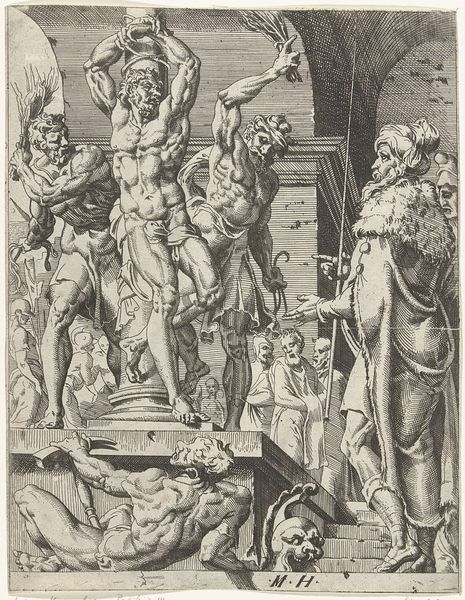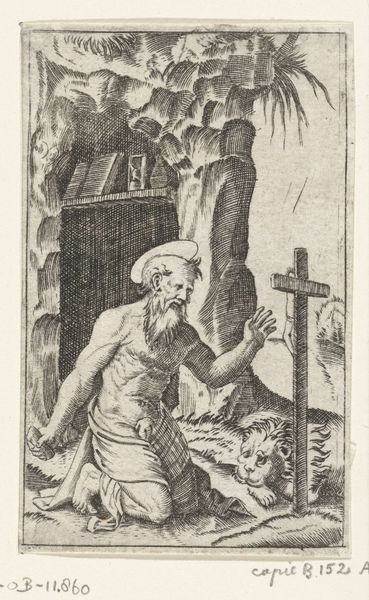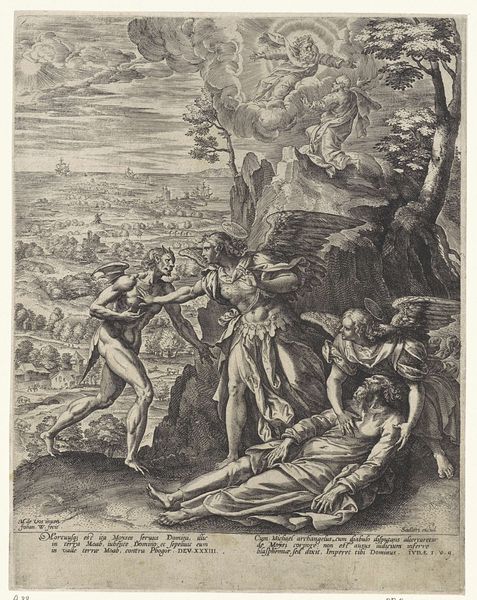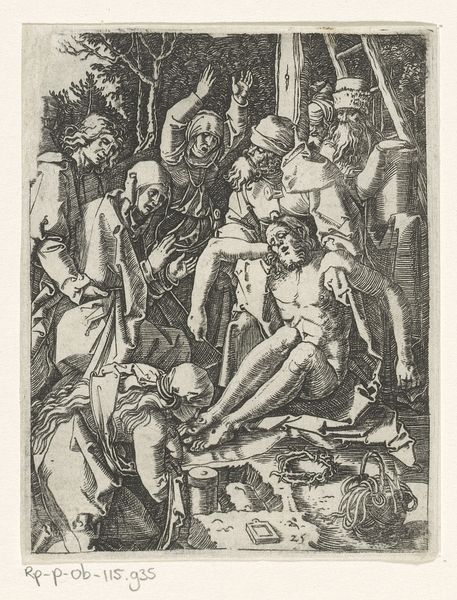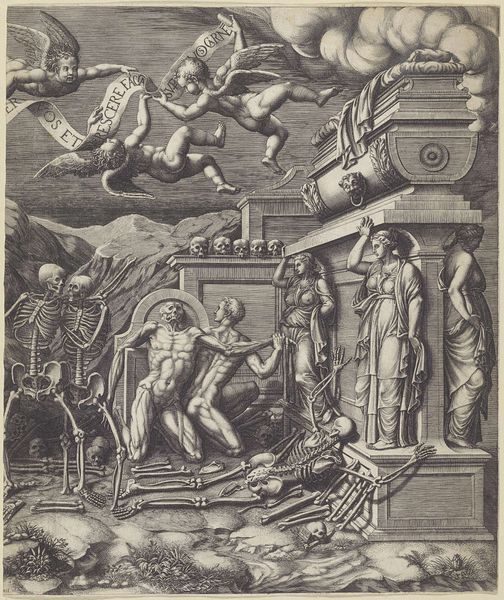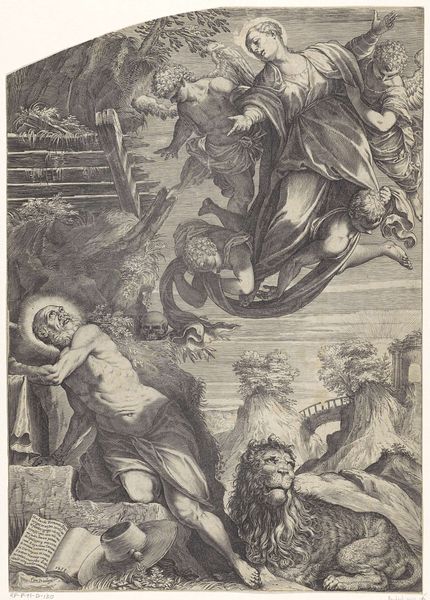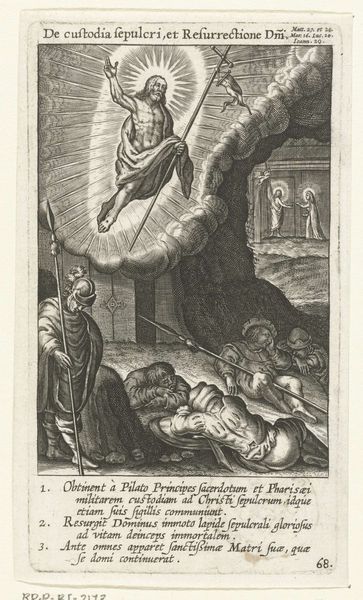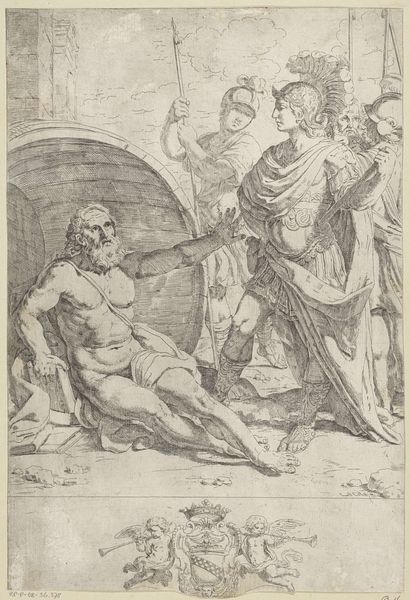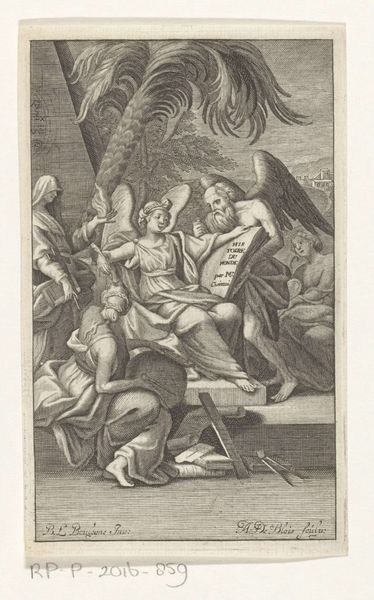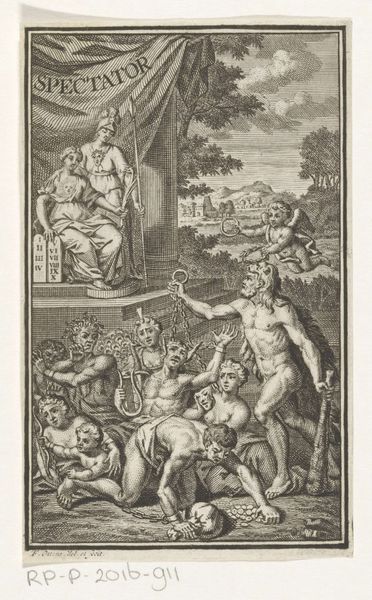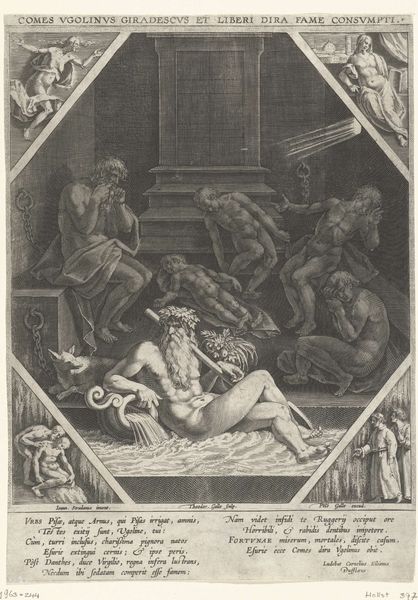
Hero stort zich uit wanhoop in zee nadat haar geliefde Leander verdronken is in de Hellespont 1681 - 1737
0:00
0:00
francoisvanbleyswijck
Rijksmuseum
print, engraving
#
narrative-art
#
baroque
# print
#
old engraving style
#
figuration
#
personal sketchbook
#
19th century
#
history-painting
#
engraving
Dimensions: height 165 mm, width 108 mm
Copyright: Rijks Museum: Open Domain
Editor: This engraving from between 1681 and 1737 by François van Bleyswijck, titled "Hero throws herself in despair into the sea after her beloved Leander drowned in the Hellespont", is just striking. It's incredibly dramatic with all that detail rendered through lines, like the wave's textures. What catches your eye when you look at it? Curator: The materiality of the print itself is really what speaks to me. Think about the engraver meticulously carving into a metal plate, the labor involved in creating multiple impressions, and the ways that those impressions were then circulated and consumed. The story, of course, has its place, but the means of production here—the social and economic context of printmaking—that's where the real meaning lies. Editor: So, even the choice of producing it as a print… is that a comment in itself? Curator: Precisely. By choosing printmaking, rather than, say, painting, van Bleyswijck is participating in a specific kind of artistic economy. He's making the story more accessible, democratizing it to some extent, aligning the artwork itself with a growing market for images. What do you think the story meant to the viewers of the day? Editor: Maybe it resonated more widely as an accessible print, engaging them in both moral contemplation and some sort of status, perhaps because the image became affordable. Curator: Exactly. So, while the narrative may seem like one of pure, tragic love, a materialist approach forces us to consider the socio-economic implications. The tale, like any story, changes when its consumption widens and gets produced industrially, becoming a market product as well as fine art. Editor: I never considered engravings in that light before; thinking about its value in production and circulation shifts everything. Thanks for opening my eyes to all the things that material tells. Curator: Of course, that material dimension and distribution of art always plays an important role!
Comments
No comments
Be the first to comment and join the conversation on the ultimate creative platform.

